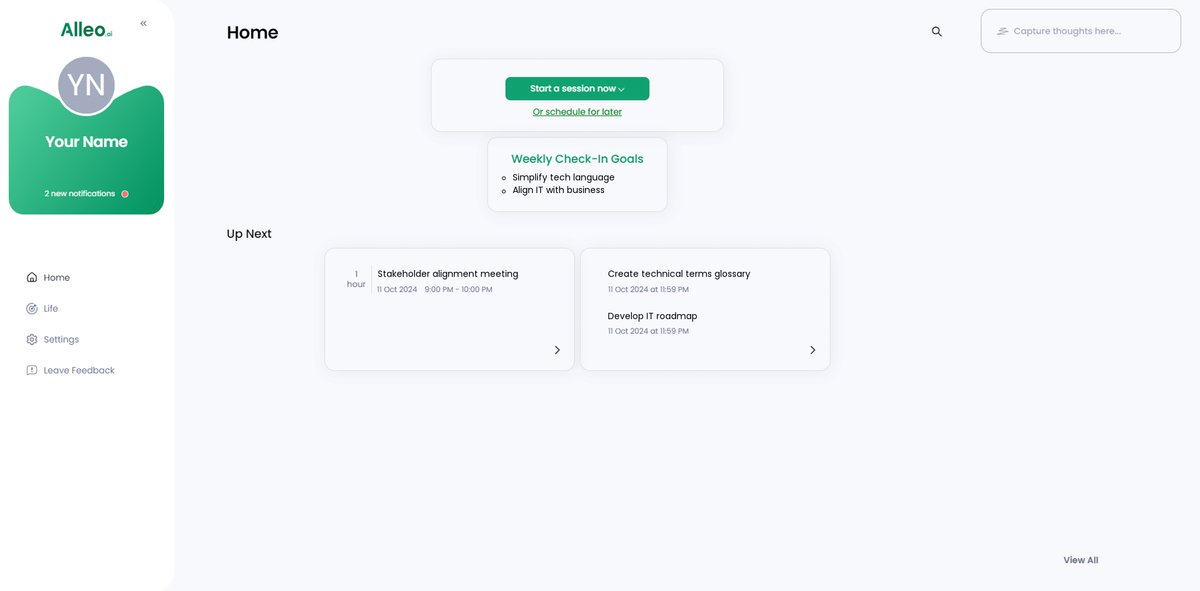4 Powerful Strategies for IT Leaders to Bridge Communication Gaps with Diverse Stakeholders
Are you struggling to communicate your technical vision to non-technical colleagues? Bridging IT communication gaps can be a significant challenge for technology leaders.
It’s a common hurdle for IT professionals and CIOs alike.
In my role as a life coach, I’ve guided many professionals through these very challenges. I understand the frustration when your ideas don’t resonate with the entire team, hindering effective IT collaboration.
In this article, you’ll learn actionable IT communication strategies to bridge communication gaps effectively. We’ll explore simplifying technical language, improving business-IT alignment, data storytelling, and fostering cross-functional team management.
Let’s dive into these stakeholder engagement techniques.

Understanding the Communication Hurdle
As an IT leader, you face unique challenges during your transition into leadership roles. Communication gaps often emerge when bridging IT communication gaps, especially when working with both technical and non-technical stakeholders.
Many clients initially struggle with explaining complex technical concepts in simple terms, a key aspect of effective IT collaboration. This can lead to misunderstandings and project delays in IT project communication.
In my experience, misaligned goals are a common outcome of poor communication. When your team doesn’t grasp the business context, it can derail projects, highlighting the importance of business-IT alignment.
Moreover, project inefficiency can arise from unclear communication. This often results in wasted time and resources, emphasizing the need for IT communication strategies.
The frustration is real, but addressing these communication challenges is crucial for your leadership success and developing essential leadership skills for CIOs.

Key Steps to Bridge Communication Gaps in IT Leadership
Overcoming this challenge requires a few key steps in bridging IT communication gaps. Here are the main areas to focus on to make progress in effective IT collaboration.
- Simplify technical language for non-tech stakeholders: Learn to explain complex ideas in simple terms, enhancing stakeholder engagement techniques.
- Align IT initiatives with business goals: Ensure IT projects support overall business objectives, improving business-IT alignment.
- Use data storytelling to communicate insights: Present data in engaging, understandable ways for better IT project communication.
- Foster cross-functional collaboration: Build strong relationships across different teams, promoting diversity in technology leadership.
Let’s dive into these strategies for bridging IT communication gaps!

1: Simplify technical language for non-tech stakeholders
Simplifying technical language is crucial for IT leaders to ensure all stakeholders understand and support their vision, effectively bridging IT communication gaps.
Actionable Steps:
- Attend communication workshops to learn techniques for simplifying technical language and improving IT communication strategies.
- Participate in workshops focused on technical communication for non-experts.
- Practice explaining complex concepts to a non-technical colleague or friend, enhancing stakeholder engagement techniques.
- Use analogies and simple language to describe a recent project.
- Create a glossary of common technical terms with simplified definitions for your team to facilitate effective IT collaboration.
- Develop a shared document accessible to all team members.
Explanation: Simplifying technical language helps bridge IT communication gaps, ensuring that everyone understands the key points. This fosters better collaboration and reduces the likelihood of misunderstandings in cross-functional team management.
According to True Project Insight, clear communication is critical for effective project management and stakeholder engagement. Adopting these steps will help you communicate more effectively with non-technical stakeholders, improving business-IT alignment.
Benefits of simplifying technical language:
- Increases understanding and engagement from non-technical stakeholders
- Reduces misinterpretations and potential project delays
- Fosters a more inclusive and collaborative work environment, promoting diversity in technology leadership
These steps will set the stage for aligning IT initiatives with business goals, which we will discuss next.

2: Align IT initiatives with business goals
Aligning IT initiatives with business goals is essential for bridging IT communication gaps and ensuring that your projects support the overall strategic mission of the company.
Actionable Steps:
- Schedule regular meetings with business stakeholders to understand their objectives and priorities, improving stakeholder engagement techniques.
- Conduct monthly alignment meetings with department heads to stay updated on business needs and foster effective IT collaboration.
- Develop a strategic IT roadmap that directly supports the company’s business goals, enhancing business-IT alignment.
- Create a roadmap document that aligns IT projects with business objectives and timelines, facilitating technology change management.
- Communicate the business value of IT projects in terms that resonate with non-technical stakeholders, employing IT communication strategies.
- Deliver presentations that focus on ROI and business impact rather than technical details, demonstrating leadership skills for CIOs.
Explanation: Aligning IT initiatives with business goals ensures that your projects contribute to the company’s success. This alignment helps in securing stakeholder buy-in and resources, bridging IT communication gaps effectively.
According to Resource1, clear communication and aligned goals are essential for effective collaboration. By following these steps, you will be better equipped to demonstrate the value of IT initiatives in a business context, improving cross-functional team management.
This alignment will pave the way for using data storytelling to communicate insights effectively, which we will discuss next.

3: Use data storytelling to communicate insights
Using data storytelling to communicate insights is essential for bridging IT communication gaps and making complex data understandable and engaging for non-technical stakeholders.
Actionable Steps:
- Learn data storytelling techniques through online courses or workshops to improve IT communication strategies.
- Enroll in a data storytelling course on platforms like Coursera or LinkedIn Learning to enhance stakeholder engagement techniques.
- Create visual data stories using tools like Tableau or Power BI to make insights more accessible and foster effective IT collaboration.
- Develop interactive dashboards that highlight key insights for better business-IT alignment.
- Share data stories in team meetings and solicit feedback to improve clarity and impact, promoting cross-functional team management.
- Regularly present data stories in cross-functional meetings to bridge IT communication gaps.
Key elements of effective data storytelling for bridging IT communication gaps:
- Clear narrative structure with a beginning, middle, and end
- Visually appealing and easy-to-understand graphics
- Relevance to the audience’s interests and goals, supporting technology change management
Explanation: Data storytelling is crucial because it turns raw data into meaningful narratives. This helps in bridging IT communication gaps and ensures that insights are understood by all stakeholders, improving cultural competence in IT.
According to Performance Magazine, using data storytelling techniques makes communication more engaging and persuasive. Implementing these steps will enhance your ability to convey complex data effectively, a key leadership skill for CIOs.
Next, we will explore fostering cross-functional collaboration to further bridge IT communication gaps.

Partner with Alleo for Effective Communication
We’ve explored the challenges of bridging IT communication gaps, their impact on leadership, and actionable solutions. But did you know you can work with Alleo to make this journey easier and faster?
Alleo is an AI life coach designed to help leaders like you improve business-IT alignment and stakeholder engagement techniques. With personalized coaching sessions, Alleo provides actionable strategies to overcome communication challenges and enhance cross-functional team management.
Start by setting up an account and creating a personalized plan tailored to your needs, focusing on IT communication strategies and cultural competence in IT.
Alleo’s coach will guide you through each step, offering feedback and tracking your progress in bridging IT communication gaps. The AI coach will handle technology change management, keep you accountable, and send reminders through text and push notifications.
Experience full coaching sessions on effective IT collaboration and leadership skills for CIOs, just like with a human coach, but at a fraction of the cost. Plus, Alleo offers a free 14-day trial with no credit card required.
Ready to get started for free and improve your IT project communication?
Let me show you how!
Step 1: Log In or Create Your Account
To start bridging communication gaps with AI coaching, log in to your existing Alleo account or create a new one to begin your personalized leadership development journey.

Step 2: Choose Your Focus Area
Select “Setting and achieving personal or professional goals” to address the communication challenges discussed in the article, helping you develop the skills needed to effectively convey your technical vision to non-technical colleagues.

Step 3: Select “Career” as Your Focus Area
Choose “Career” as your focus area in Alleo to address communication challenges specific to IT leadership, aligning perfectly with the strategies discussed for bridging technical and non-technical gaps in your professional environment.

Step 4: Starting a coaching session
Begin your journey with Alleo by scheduling an initial intake session, where you’ll discuss your communication challenges and set up a personalized plan to bridge gaps between technical and non-technical stakeholders.

Step 5: Viewing and Managing Goals After the Session
After your coaching session, open the Alleo app to find your discussed goals displayed on the home page, where you can easily track and manage your progress towards improving communication with non-technical stakeholders.

Step 6: Adding Events to Your Calendar or App
Use the app’s calendar and task features to track your progress in solving communication challenges by adding key milestones, meetings, and deadlines related to improving your technical communication skills.

Final Thoughts: Bridging Communication Gaps for IT Leaders
As we wrap up, remember that effective communication is key to your success in bridging IT communication gaps.
You’ve learned to simplify technical language, align IT with business goals, use data storytelling, and foster cross-functional team management.
This journey in technology change management can be challenging, but you’re not alone.
You have the power to make a significant impact through effective IT collaboration. Take these actionable steps and watch your leadership skills for CIOs flourish.
And don’t forget, Alleo can support you along the way in improving stakeholder engagement techniques.
Try our AI life coach for personalized guidance on business-IT alignment and a free 14-day trial.
Start bridging those IT communication gaps today.
Your leadership journey in enhancing diversity in technology leadership awaits!